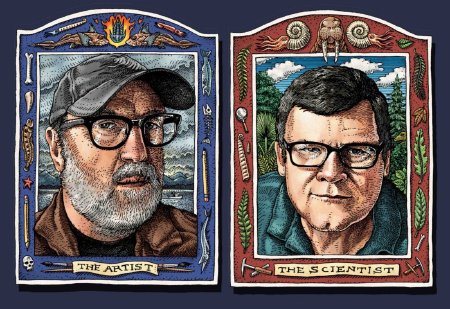
- Digital image file
- Exhibits 87
- The Artist and the Scientist
- Alaskan artist Ray Troll and paleontologist Dr. Kirk Johnson first crossed paths at an exhibition opening of Troll's in Seattle. They quickly discovered they had many interests in common, and a bond was formed. Before long they were planning their fi... View Full Record
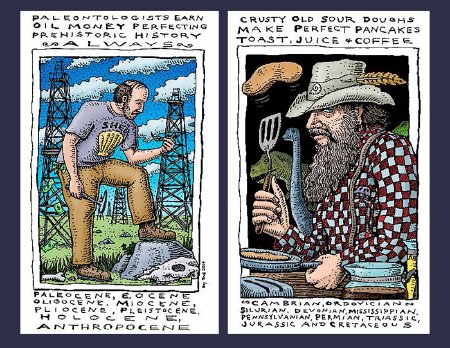
- Digital image file
- Exhibits 88
- Deep Time Will Blow Your Mind
- Fossils tell a great deal about the long history of life on Earth. Geologists have studied animal and plant fossils to understand the story of deep time and of how life has evolved and changed over the eons. Species have appeared and gone extinct and... View Full Record
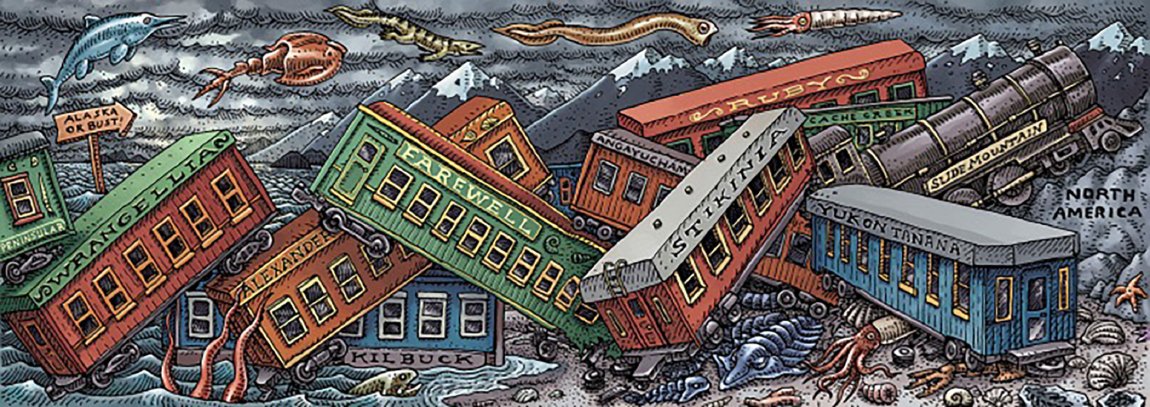
- Digital image file
- Exhibits 89
- The Great Alaska Terrane Wreck
- The west coast of North America has been a coastline for an incredibly long time (nearly a billion years), which is why Kirk Johnson likes to call it the "eternal coastline." It is impressive for any geologic feature to endure for so long. By cont... View Full Record
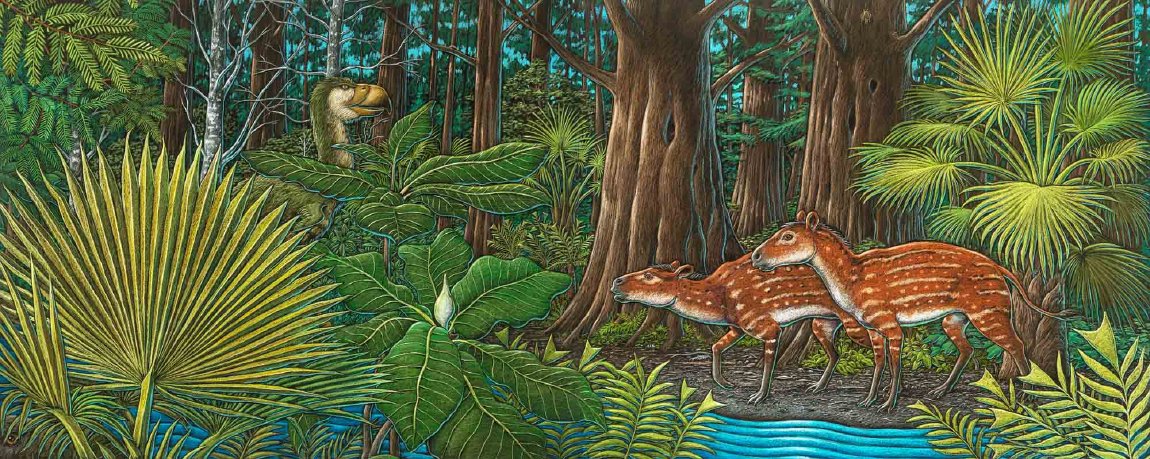
- Digital image file
- Exhibits 90
- The Fossil Leaves of the Chickaloon Formation
- Abundant leaf fossils from the early Eocene Epoch have been found near Sutton, Alaska, about 70 miles northwest of Anchorage in what's called the Chickaloon Formation. Numerous trackways have been found perfectly preserved in the fossilized forest fl... View Full Record
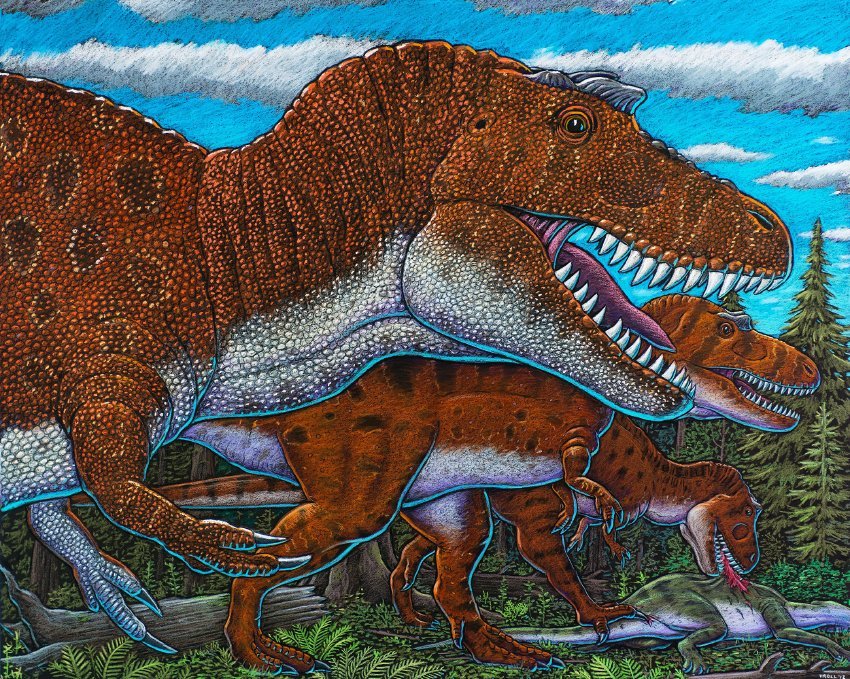
- Digital image file
- Exhibits 91
- The Dinosaurs of Alaska
- During the Mesozoic Era (roughly 252 to 66 million years ago), a dense polar forest covered much of Alaska and it was teeming with all shapes, sizes and varieties of dinosaurs. The idea that dinosaurs once lived and thrived in the Far North came... View Full Record

- Digital image file
- Exhibits 92
- Duckbills Galore
- Over ninety-five percent of the bones collected from the Liscomb Bone Bed are from the duckbilled dinosaur Ugrunaaluk. The vast majority of the bones recovered are from juveniles. Such an abundance of juvenile dinosaur bones raises all kinds of quest... View Full Record
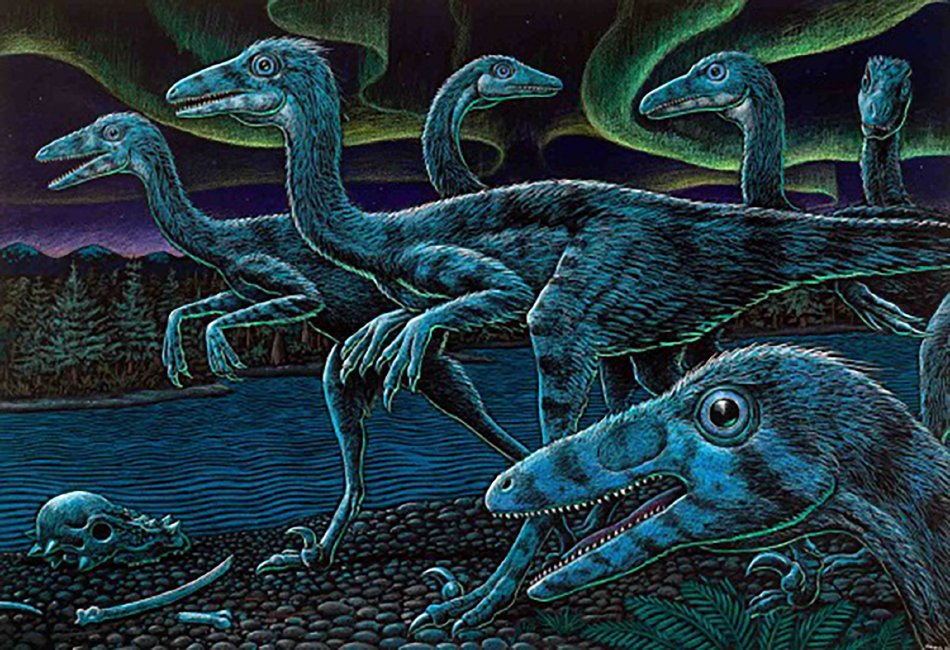
- Digital image file
- Exhibits 93
- The Wounding Tooth Dinosaur
- The most commonly found predatory dinosaur teeth in Alaska are from a raptor named Troodon. The name means "wounding tooth." If you look closely at the sharp serrations, you can see why. Troodon lived throughout North America during the Late Cretaceo... View Full Record
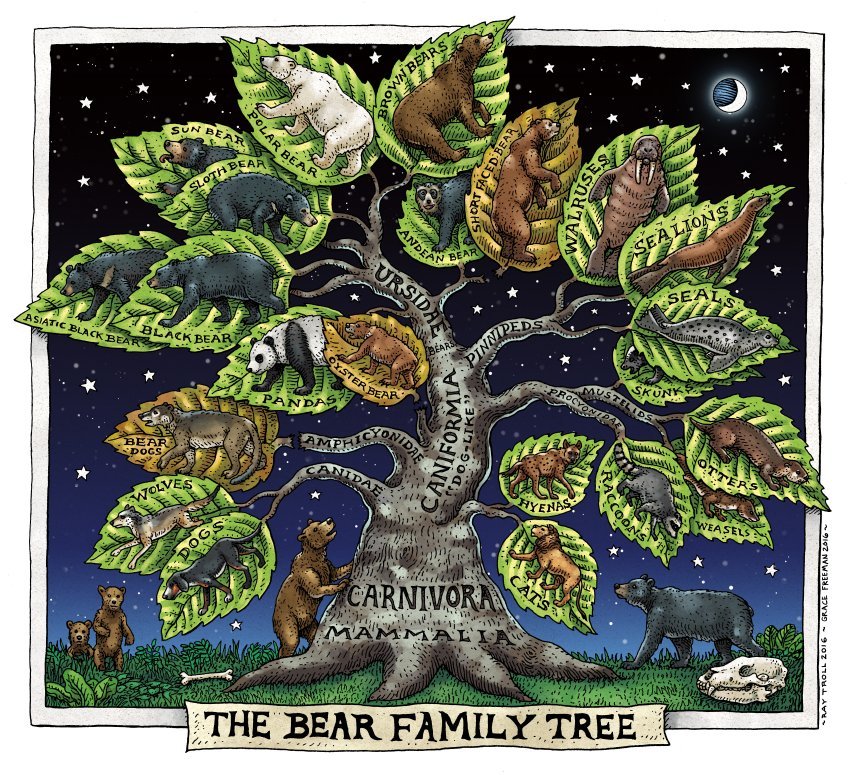
- Digital image file
- Exhibits 94
- Bear Family Tree
- The closest relatives to bears are seals, sea lions and walrus. Pinnipeds (the name given to the scientific order for seals, sea lions and walrus) are the sea-going cousins of bears. Once, a creature existed called an oyster bear (Kolponomos) that ro... View Full Record
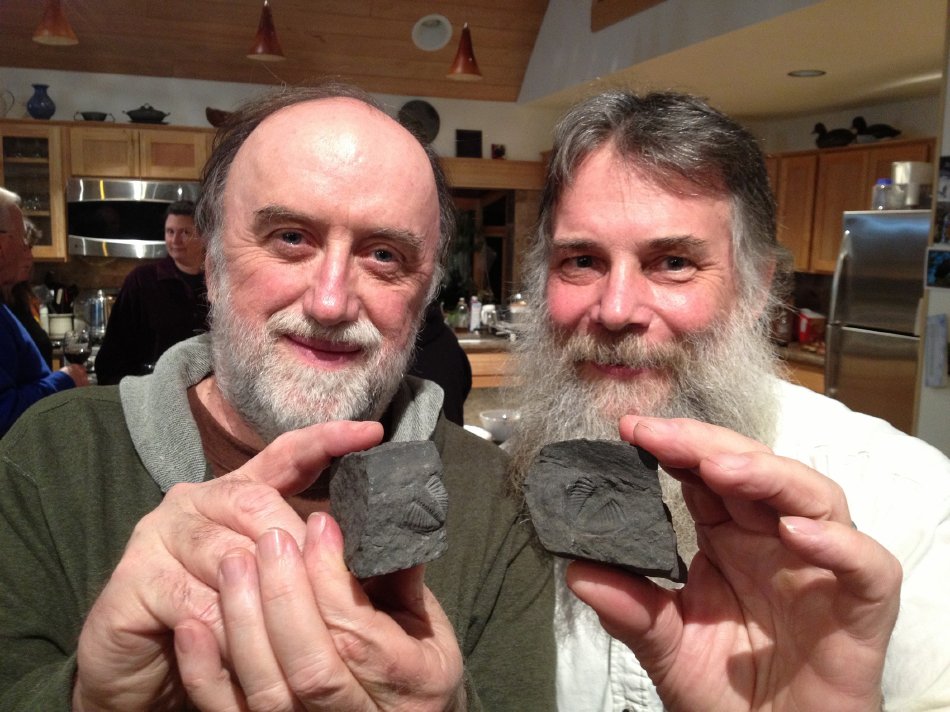
- Digital image file
- Exhibits 95
- Trilobite Bros
- Trilobites are extinct marine arthropods that flourished in the oceans of the ancient Paleozoic. The word trilobite means "three-lobed." The closest living relatives of trilobites are horseshoe crabs and spiders! In 1991, Ray Troll and Jim Baicht... View Full Record

- Digital image file
- Exhibits 96
- Triassic Marine Reptiles
- The fossilized remains of large marine creatures called ichthyosaurs have been unearthed in various locations around Alaska. Ichthyosaur is Greek for "fish reptile" - although they're not fish, but air-breathing reptiles. They look remarkably like mo... View Full Record
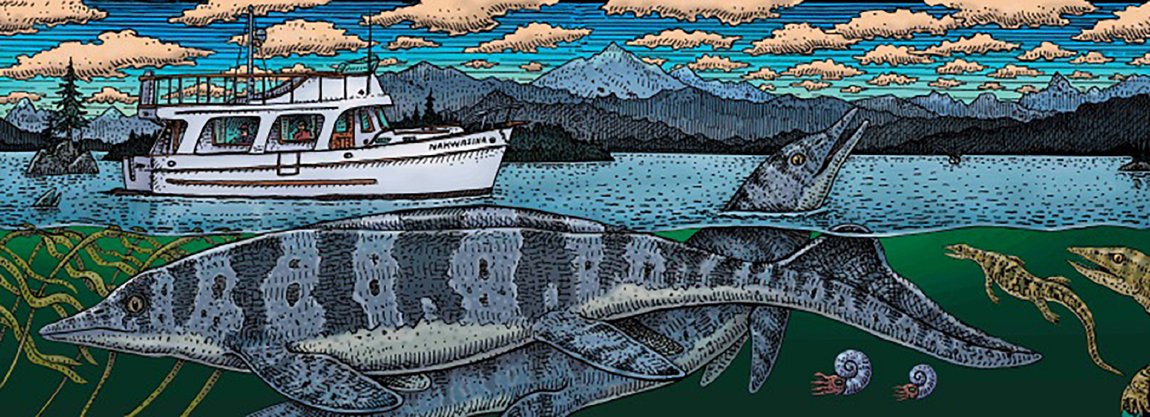
- Digital image file
- Exhibits 97
- Fish Lizards of the Tongass
- This is Ray's paleo-fantasy of looking out the window of a boat dreaming of a Triassic ocean full of giant ichthyosaurs, thalattosaurs, and ammonites. Ray and Kirk traveled through Southeast Alaska on their friend Barth Hamberg's boat called the... View Full Record

- Digital image file
- Exhibits 98
- Thalattosaur Discovery
- In 2011, the fossilized skeleton of a very rare marine reptile known as a thalattosaur was found in the Triassic rocks of an island near Kake, Alaska. It was given the name Gunakadeit joseeae on the recommendation of Sealaska Heritage Institute's Cou... View Full Record
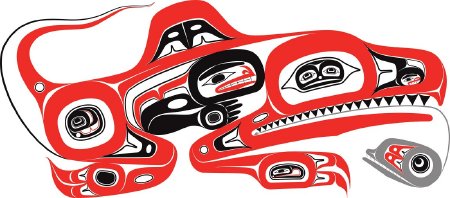
- Digital image file
- Exhibits 99
- Gunakadeit
- Robert Mills is a Tlingit artist of the Tsaagweidí clan from Kake, Alaska who works with metal, paint, and wood. His art is deeply tied to Lingít Aaní and the Tlingit culture, which grew out of thousands of years of intera... View Full Record
Cruisin' the Fossil Coastline
 Table of Contents
Table of Contents